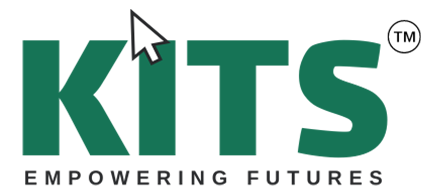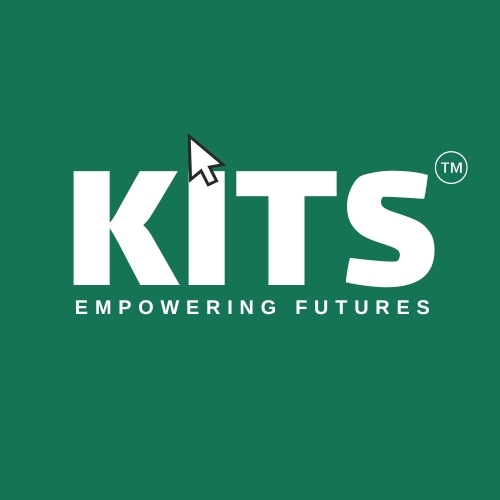Learn SaaS Application Development at Kyass Institute of Technical Skills (KITS). Master the latest tools and techniques to build scalable, secure cloud-based software. Enroll today!
Introduction
SaaS which stands for Software as a Service is now an industry giant especially considering that it supports numerous applications and companies, big and small, across the globe. So in this Comprehensive SaaS Application Development Guide 2024 we will review the major stages necessary for creating effective, reliable, and user-friendly SaaS applications.
No matter the level of experience you have, whether you are a beginner or you have been developing for several years this guide provides meaningful tips and recommendations that will be useful to any developer.
What is SaaS?
SaaS also known as software on demand is a software delivery model where the applications are hosted on the internet and users are given access to use them online. By using a web browser, the users can use the software which is hosted on the cloud and it does not require local installation on each machine, it can be updated easily and frequently as necessary. Examples of such SaaS application development include Google Workspace, slack, and Dropbox among others.
The growth of take-up of SaaS applications will experience further expansion in 2024, as businesses continue to seek new approaches for purchasing applications that are innovative, affordable, and elastic. Hence, those who need to take advantage of the expanding market for SaaS Application Development need to have a clear understanding of the issue in question.
Key Steps in SaaS Application Development
Some key processes have to be undergone to develop a successful SaaS application. Here is a detailed breakdown: Here is a detailed breakdown:
1. Understanding the SaaS Model
First of all, one needs to explain what the SaaS model is Before going any further, one should define what exactly SaaS means and whether or not it is profitable. SaaS applications being inherently service-oriented, depend mainly on a subscription model, and hence, the revenues are mostly recurring in nature. In this model, developers have to pay much attention to updating, enhancing, and supporting proper customers to sustain their satisfaction level.
2. Identifying the Core Features
In a SaaS application context, success is all about determining and implementing the basic capabilities that address users’ needs. Begin with the definition of the Value Proposition that your company offers. What are the specific problems in the user’s business do your SaaS addresses? Creating a prototype that doesn’t include all the components of a final product is a good approach as it will help to check out the efficiency of a concept.
3. Choosing the Right Technology Stack
Selecting the appropriate technology stack for your SaaS application is a vital decision that affects its performance, scalability, and security. Common choices include:
- Frontend: React, Angular, Vue.js
- Backend: Node.js, Django, Ruby on Rails
- Database: MySQL, PostgreSQL, MongoDB
- Cloud Services: AWS, Microsoft Azure, Google Cloud
Choosing the right tools and platforms will ensure your SaaS application runs efficiently and can be easily scaled as your user base grows.
4. Building a Scalable Infrastructure
Scalability is one of the most critical aspects of SaaS Application Development. As your user base grows, your application must be capable of handling increasing demand without performance degradation. Cloud services like AWS, Microsoft Azure, and Google Cloud offer robust infrastructure for scaling your application.
5. Implementing Security Measures
Security is one of the most important considerations in the construction of SaaS. Many companies use SaaS applications to process and store their Essential business data, and thus SaaS applications have become the main target of such attacks. Use encryption of data in transit and data in rest, secure the APIs, and conduct regular security assessments. Furthermore, make sure to meet the requirements of such laws as GDPR or HIPAA if your SaaS application is related to personal/healthcare data.
6. Designing an Intuitive User Interface
Perhaps the most critical requirement for the SAAS application development is the one dealing with the interface: it has to be natural and easy to use. It thus becomes easy to understand the primary goal which is to create a frictionless experience that is engaging to the end-users. You can use tools such as Figma or Sketch to design wireframes and a prototype of the interface and demonstrate it to the target audience to check the ease of usage.
7. Developing the Application
Having found the core features, selected the technology stack, and designed the UI you are ready to start the development. SaaS application development happens in cycles where testing of the product is conducted alongside fixing issues and enhancement of features. Automated testing and releasing through the use of CI/CD pipelines can also make the process of development quicker and much more efficient where changes are made frequently.
8. Deploying and Maintaining the Application
The next step after the development of your SaaS application is to host it on the cloud. Use a hosting service provider such as AWS or Azure. After that, some may require constant surveillance coupled with upgrades periodically to keep pace with new developments. The SaaS model demands speedy delivery of new features, closing of loopholes, and optimization of performance to suit the user’s needs.
Why Choose KITS for SaaS Application Development?
Thus, for the best learning of SaaS Application Development, lovers of technical skills are advised to visit Kyass Institute of Technical Skills (KITS) of Lahore. Using a dedicated specialist SaaS application development course as a basis, you will learn how to develop applications that are scalable, reliable, and secure from scratch.
Industry-Expert Instructors
The instructors that we have in our program are always experienced professionals in services with over five years in the SaaS industry. They incorporate practical training and include examples from real life to prepare the learner for issues facing the job market.
Comprehensive Curriculum
It goes from selecting an appropriate technology where to develop the product to creating user-friendly interfaces and defining appropriate security measures. Focus is given to hands-on experience, and the students build their SaaS applications throughout the class.
State-of-the-Art Facilities
KITS enables you to use the tools of today’s development, cloud-based platforms, and tutorials to improve the course learning experience.
Career-Oriented Training
While the curriculum offered at KITS emphasizes the core competencies that enhance one’s technical skills, equal importance is given to the training that prepares you for a bright career. The career counseling sessions coupled with the job placement services make it possible for you to get a good job once you are done with the course.
Career After Completing the Course in SaaS Application Development
The demand for SaaS developers is soaring, making this a lucrative field for those looking to advance their careers in tech. After completing the SaaS Application Development Course at KITS, you can explore the following career paths:
SaaS Developer
Create and sustain Computer software applications as Software as a Service for startups or businesses. It is your job to write code and build cloud infrastructure, along with anything in between.
Cloud Engineer
Explains how to effectively manage and grow multi-tenant applications that are built on cloud environments while considering the escalating user traffic and keeping in mind the security, stability, and scalability aspects.
DevOps Engineer
Focus on automating and improving the development and deployment processes for SaaS applications, ensuring faster release cycles and more reliable performance.
Product Manager
If you have a knack for both technical and business aspects, becoming a product manager in the SaaS space could be a rewarding career. You’ll oversee the entire lifecycle of the SaaS product, from concept to launch.
Freelance SaaS Developer
With the knowledge and skills acquired, you can start your own freelance business, offering SaaS development services to clients globally.
It is worth noting that the SaaS industry possesses great prospects for growth. Business entities worldwide are always on the lookout for talent that can develop optimal, high-quality, and easily manageable applications. You are therefore set to learn the new trends in application development should you be pursuing the SaaS Application Development course offered by KITS to make a success of your career and satisfy the increased demand.
Conclusion
The Comprehensive SaaS Application Development Guide 2024 highlights the importance of mastering this in-demand skill. Developers can build robust and successful applications by understanding the SaaS model, choosing the right technology stack, and focusing on scalability and security.
If you are serious about building a career in this exciting field, Kyass Institute of Technical Skills (KITS) offers the perfect platform to acquire these skills. With our expert instructors and comprehensive training, you’ll be ready to take on the challenges of the SaaS industry.
So why wait? Start your journey into SaaS Application Development today with KITS and unlock endless career opportunities in the tech industry!



